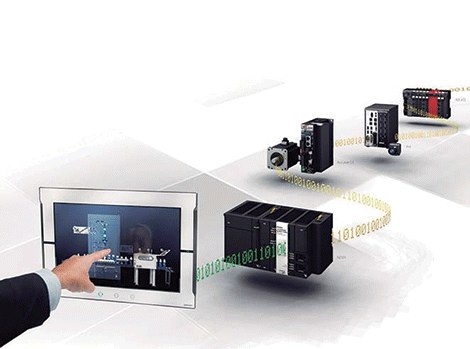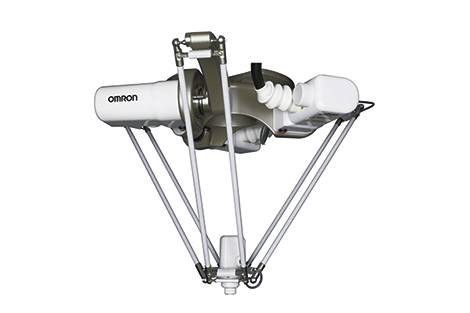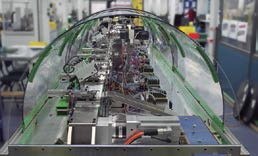Based on highly proven technology
Today, every machine manufacturer needs to make constant improvements related not only to the intelligence of the machine but also to its production flexibility so that the manufactured products are competitive. But at the same time, you must ensure that, at all times, it will work perfectly. And it is that flexibility should not be at odds with production quality. On the contrary, they must unite to guarantee maximum competitiveness.
The CJ2 series is based on the well-known and successful technology of Omron's CJ1 controllers which, launched on the market in 2001, are currently used in a wide variety of applications worldwide.
Now, as a natural successor, the CJ2 series combines the proven technology of its predecessor, with a wider variety of CPUs, higher speed and memory, and a great diversity of communication interfaces.
Thus, CJ2 is the result of years of experience as a market leader in the field of modular controllers and represents the logical advance in controller design. It offers exceptional performance and faster I/O response, as well as great expandability.
More for less
To stay ahead in the world of machine manufacturing, the manufacturer needs to grow according to the needs of end users. For faster production, better quality control and traceability, you need more speed and more memory.
This is why the CJ2 series offers a wide variety of CPUs to suit every task: from a 5Kstep program capacity with 64Kword memory (double that of the equivalent CJ1 CPU), to a capacity of 400 Ksteps and 832 Kchannels. All CJ2M CPUs include an additional 20 Ksteps for use of function blocks and can handle up to 2.560 I/O points and/or up to 40 units on 3 expansion racks.
Connectivity is another of the notable points. All CPUs incorporate a USB port for programming. In addition, depending on the CPU, it can include a serial EtherNet/IP port and equip an optional RS-232 or RS-422/485 port.
All these features are offered keeping full compatibility with the existing cards of the CJ1, avoiding any disturbance in the reuse of material, spare parts or stock management.
Along with the existing CJ1 cards, Omron has also added new high-speed I/O units as analog input modules with a 20 μs conversion time. New instructions in the CJ2 provide immediate and easy access to these very fast I/O. The result is greater reliability in real time.
On the other hand, the axis control by pulses has also been substantially improved with new cards for CJ2M. By mounting up to two modules per CPU, up to four motion axes can be controlled. And with specific instructions, these axes can be directly controlled by the PLC program, with no communication delays.
Finally, it is worth noting the wide range of supported communication solutions, ranging from RS-232 or RS-422/485 to industrial Ethernet buses such as EtherNet/IP, ProfiNet or EtherCAT, passing through traditional field buses such as DeviceNet, Profibus , Component, CAN, etc. And as if that were not enough, specific protocols can be developed for the specific needs of any application, by sending serial frames or using Ethernet sockets with the ETN21 card.
Known one, known all
Despite the wide variety of CPUs, the solid architecture common to all Omron PLC series means that it is only necessary to learn how to use one to know how to handle them all.
And all this, through the powerful and intuitive CX-One 4 development environment: from the configuration of drives and network parameters, to different regulation and detection features. CX-One includes all the necessary tools, regardless of the devices you have.
As a well-proven product, CX-One has a number of performance-enhancing features such as: IEC61131 SFC and ST language support, built-in simulation, system backup, compare and restore, and online program editing. .
In addition, the latest version of CX-One incorporates new features that reduce development time and programming errors, and will also speed up troubleshooting. These new features make it easy to reuse code over and over again.
This simple approach to speed up, simplify and reuse represents the innovations of version 4 of CX-One, which also includes the possibility of the use of structures and arrays and a renewed intelligent Ladder editor with real-time assistance.





